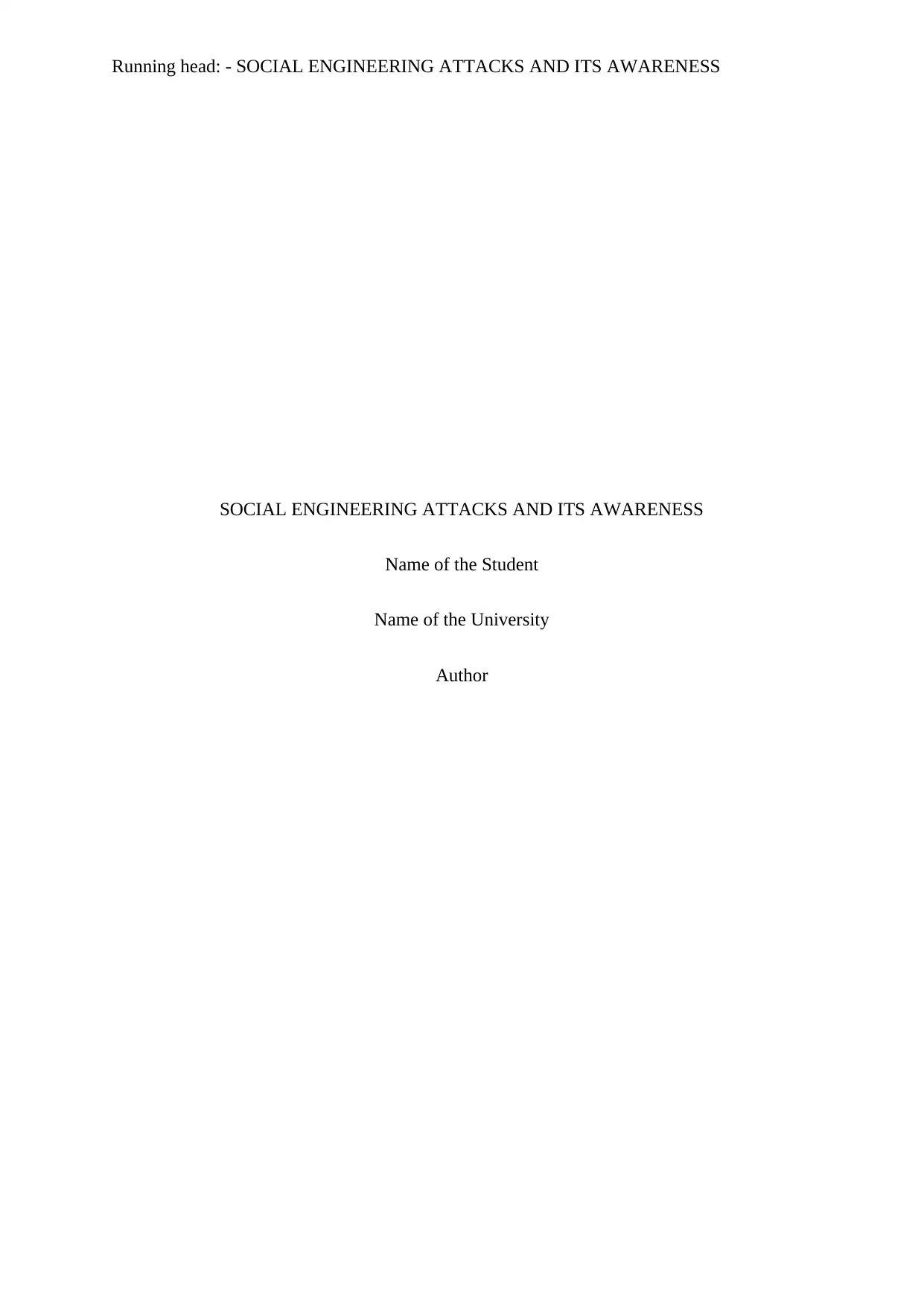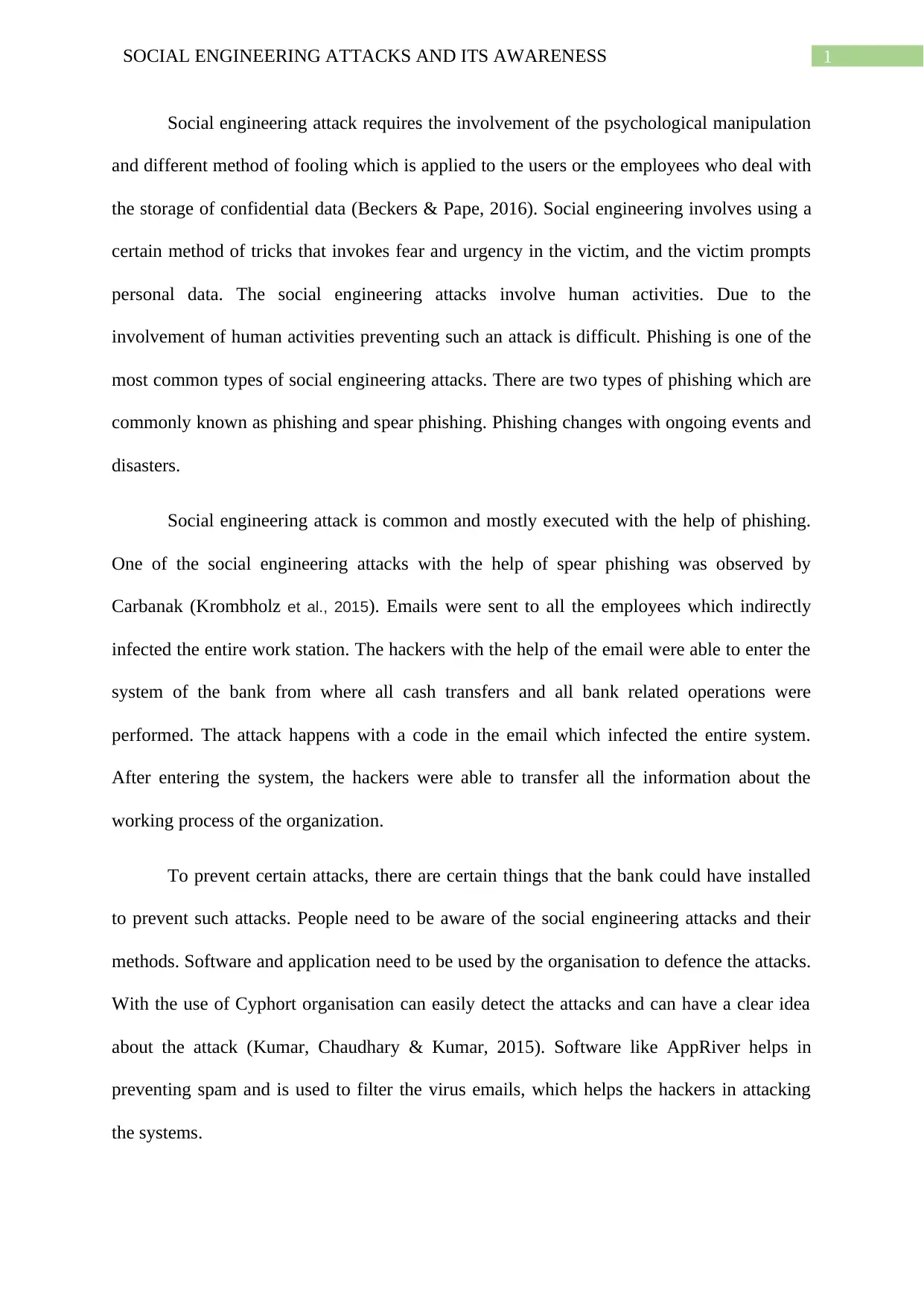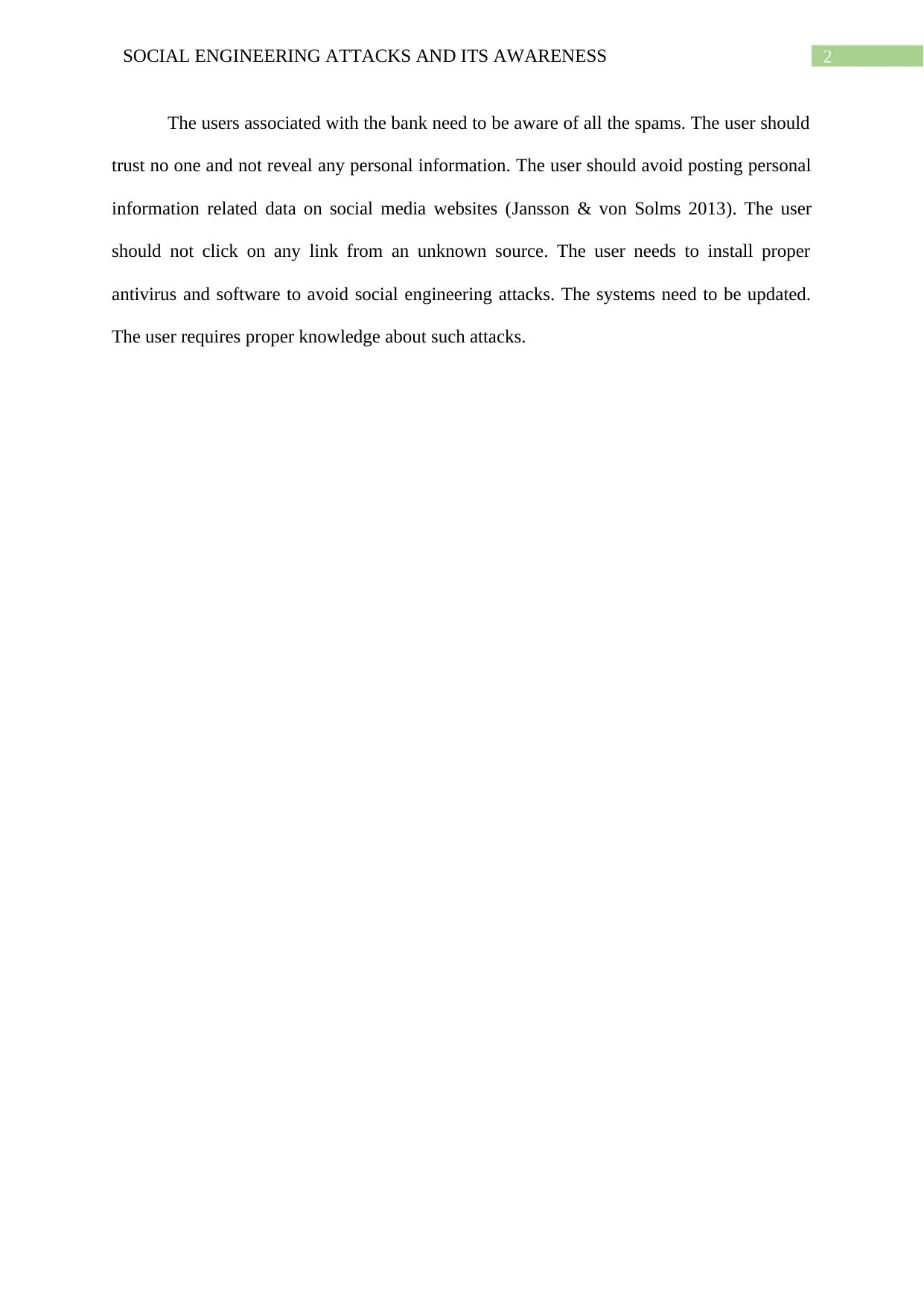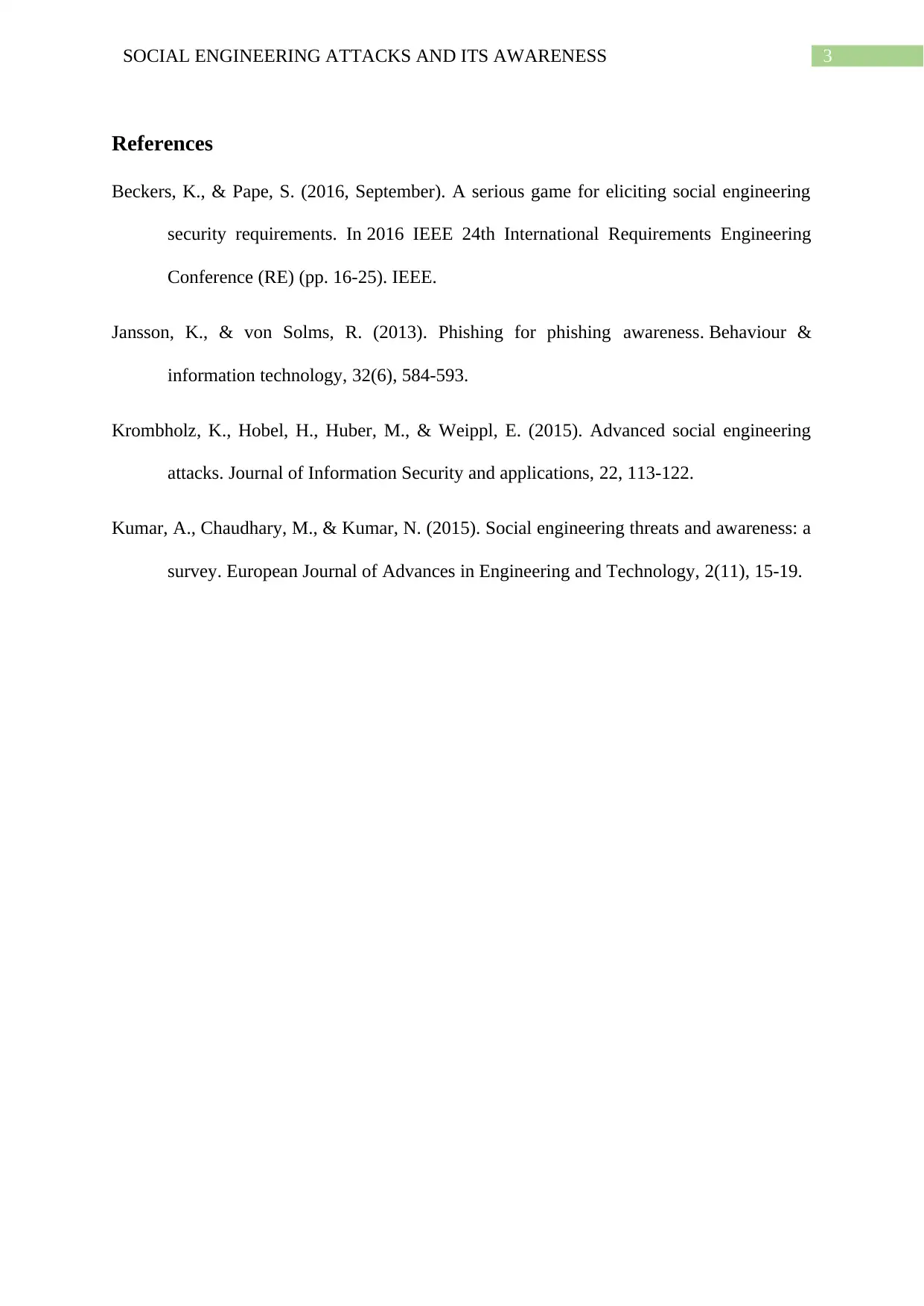University Report: Social Engineering Attacks and Awareness
VerifiedAdded on 2023/01/06
|4
|635
|83
Report
AI Summary
This report delves into the realm of social engineering attacks, emphasizing the psychological manipulation tactics employed to compromise confidential data. It explores common methods like phishing and spear phishing, detailing how attackers exploit human behavior to gain access to sensitive information. The report highlights a real-world example, the Carbanak attack, illustrating how spear phishing can infiltrate an entire workstation and compromise financial systems. It underscores the importance of user awareness, the implementation of security software, and the need for up-to-date systems to combat these threats. Furthermore, the report references key resources on user authentication, access control, and physical security, providing a comprehensive overview of cybersecurity measures to prevent social engineering attacks.
1 out of 4







![[object Object]](/_next/static/media/star-bottom.7253800d.svg)